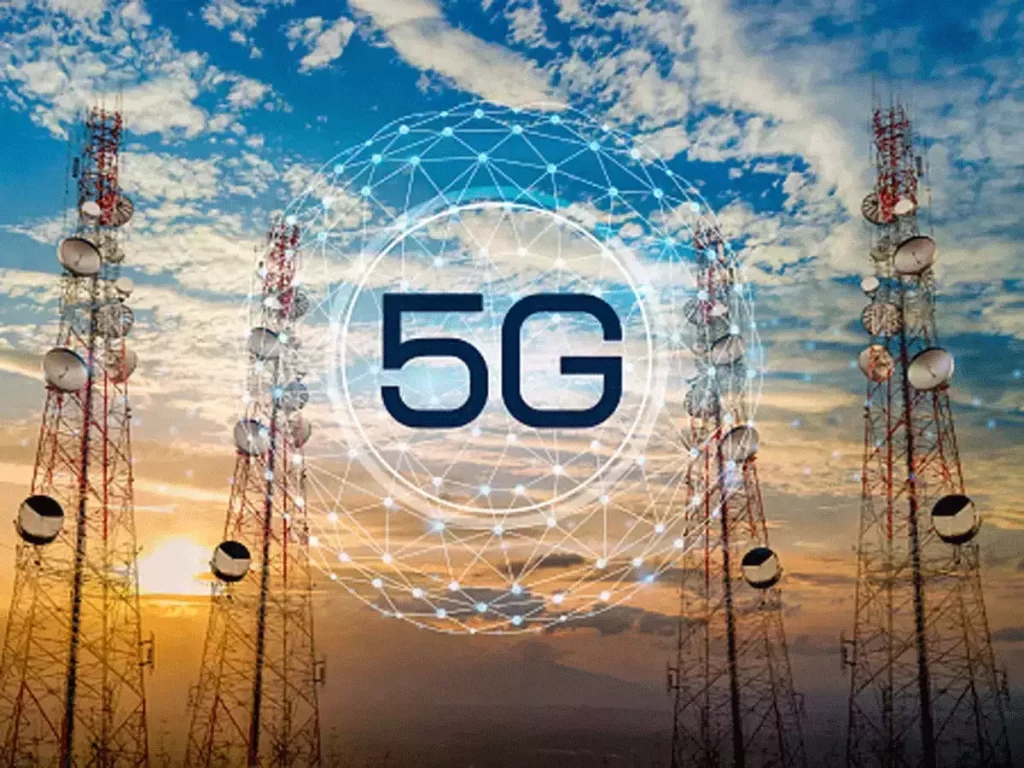The advent of 5G technology marks a transformative era for India’s telecommunications sector. The Indian government has made impressive strides in rolling out 5G services nationwide, showcasing rapid infrastructure development and remarkable technological advancements. As of now, 5G services have reached 779 out of 783 districts, underscoring the nation’s commitment to harnessing next-generation connectivity. In this detailed article, we delve into India’s 5G growth journey, highlighting key milestones, infrastructure expansion, and future prospects.

A Historic Rollout: 5G Across 779 Districts
Since the launch of 5G services on October 1, 2022, India’s telecommunications sector has experienced unprecedented growth. Within just over a year, more than 4.6 lakh 5G Base Transceiver Stations (BTSs) have been deployed, enabling seamless connectivity and bridging the digital divide across urban and rural landscapes.
The swift rollout has been driven by proactive measures undertaken by the Indian government and telecom service providers (TSPs). Notably, TSPs have surpassed the minimum rollout obligations set forth in the Notice Inviting Application (NIA) during spectrum auctions. This achievement underscores the collaborative efforts between public and private sectors to ensure widespread 5G availability.
The Backbone of 5G: Infrastructure Development
Deployment of 5G Base Transceiver Stations (BTSs)
The installation of over 4.6 lakh BTSs forms the backbone of India’s 5G infrastructure. These advanced stations enable faster data speeds, ultra-low latency, and improved network reliability. Strategically placed across cities, towns, and rural areas, these BTSs ensure comprehensive 5G coverage and cater to the diverse connectivity needs of the population.
Fiberization of Telecom Networks
To support the massive data flow associated with 5G, telecom networks have undergone extensive fiberization. Optical fiber cables are being laid at an accelerated pace, providing the robust bandwidth required for high-speed internet services. This fiberization process not only boosts 5G performance but also strengthens India’s overall digital infrastructure.
Spectrum Allocation and Efficient Utilization
The government’s transparent and fair spectrum allocation policy has played a pivotal role in the success of 5G. By ensuring optimal utilization of spectrum resources, telecom operators have been able to deliver high-quality 5G services across the nation. Auctions have provided TSPs with the necessary frequencies to meet the growing demand for high-speed connectivity.
Key Milestones in India’s 5G Journey
October 1, 2022: Official Launch of 5G
Prime Minister Narendra Modi inaugurated India’s 5G services, marking the beginning of a new era in telecommunications. The launch signified a commitment to delivering cutting-edge technology to citizens and industries alike.
Exceeding Rollout Obligations
TSPs have outperformed expectations by surpassing the mandatory rollout targets outlined during the spectrum auctions. This achievement reflects their dedication to accelerating digital transformation.
Introduction of Innovative Use Cases
5G technology has unlocked a myriad of applications, including smart cities, industrial automation, telemedicine, and enhanced online education. These use cases demonstrate the potential of 5G to drive socio-economic growth and improve quality of life.
Benefits of 5G Expansion in India
Economic Growth and Job Creation
The 5G rollout has spurred economic activity by attracting investments and creating employment opportunities. From infrastructure development to application deployment, the technology is generating jobs across multiple sectors.
Digital Inclusion
By extending 5G services to rural and remote areas, India is taking significant steps toward bridging the digital divide. Enhanced connectivity empowers underserved communities with access to education, healthcare, and e-commerce.
Boost to Emerging Technologies
Technologies such as the Internet of Things (IoT), Artificial Intelligence (AI), and Augmented Reality (AR) are thriving in the 5G ecosystem. These advancements are revolutionizing industries and positioning India as a global hub for innovation.
Challenges in 5G Rollout
High Deployment Costs
The extensive infrastructure required for 5G comes with substantial costs. From setting up BTSs to expanding fiber networks, the financial burden is a major challenge for TSPs.
Spectrum Pricing
While spectrum auctions have been successful, the high pricing of frequencies poses a constraint for telecom operators, potentially affecting affordability and profitability.
Geographical and Demographic Barriers
India’s vast and diverse geography presents unique challenges in ensuring uniform 5G coverage. Remote and hilly areas require innovative solutions to overcome connectivity gaps.
Future Prospects of 5G in India
Emergence of Smart Cities
5G will serve as the foundation for smart cities, enabling advanced urban management systems, efficient resource utilization, and improved quality of life for residents.
Transformation of Industries
Sectors like manufacturing, agriculture, and healthcare stand to benefit immensely from 5G-driven automation, precision technologies, and real-time data analytics.
Expansion of Digital Services
From enhanced video streaming to immersive gaming experiences, 5G will revolutionize digital entertainment and redefine user experiences.
Role in 6G Development
India’s 5G success story lays the groundwork for future innovations, including the development and deployment of 6G technology. By building on existing infrastructure, the country can position itself as a leader in the global telecommunications landscape.
India’s 5G rollout is a testament to the nation’s vision for a digitally empowered society. With services now available in 779 districts and an extensive infrastructure in place, the country is well-positioned to leverage the transformative potential of 5G. As India continues to expand its digital horizons, the impact of 5G will be felt across all sectors, driving economic growth, enhancing connectivity, and fostering innovation.
Frequently Asked Questions (FAQs)
1. When did 5G services launch in India?
5G services were officially launched in India on October 1, 2022, by Prime Minister Narendra Modi.
2. How many districts in India currently have 5G coverage?
As of now, 5G services are available in 779 out of 783 districts across the country.
3. What is the significance of 5G BTSs?
5G Base Transceiver Stations (BTSs) enable faster data speeds, ultra-low latency, and improved network reliability, forming the backbone of 5G infrastructure.
4. What are the benefits of 5G for rural areas?
5G enhances connectivity in rural areas, providing access to digital education, telemedicine, e-commerce, and other essential services, thereby bridging the digital divide.
5. What challenges does India face in 5G deployment?
Key challenges include high deployment costs, spectrum pricing, and geographical barriers in ensuring uniform connectivity.




